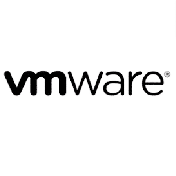Seminarinhalt
After you successfully complete this course, expect to be able to:
- Explain the benefits of a Storage Area Network (SAN)
- Explain the product benefits and main features of MSA products
- Identify, locate, and discuss functions of the hardware components including: controllers, drive enclosures and hard drives, fibre channel and iSCSI controller modules, expansion controller modules, power and cooling units, and related interconnect devices
- Identify the software applications supported on MSA products
- Navigate and utilize the Storage Management Utility (SMU)
- Discuss the sample configurations for MSA products
- Discuss and utilize command line interface commands
- Discuss basic operating procedures and associated considerations
- Discuss local and remote configuration
- Discuss how to perform troubleshooting
- Describe best practices
Programm
- Explain the positioning of the MSA family of arrays
- Describe the customer benefits of the systems
- Identify the basic features and capabilities of the MSA products
Module 2: MSA Hardware and Install
- Identify the hardware components of the MSA systems
- Locate and explain the functions of the various components
- Describe the possible configurations for the MSA products
Module 3: MSA Linear Storage Provisioning
- Describe Vdisk technologies used in MSA linear storage provisioning
- Use the System Management Utility (SMU) v2 to configure storage
Module 4: MSA Virtual Storage Provisioning
- Get familiar with the Storage Management Utility (SMU) v3
- Describe MSA virtual storage
- Identify differences between linear and virtual storage provisioning
Module 5: MSA Virtual Storage Sub-LUN Tiering
- Learn the sub-LUN or automated tiering capability of MSA
- Describe Volume Tier Affinity and page allocation rules
- List the best practices associated with automated tiering
Module 6: MSA Virtual Storage Copy Services
- Describe Virtual Copy feature in virtual storage
- Describe snapshot space management
- Describe the Volume Copy feature
- Describe virtualization features available on the MSA platform
– Thin provisioning
– SSD read cache
– Thin rebuilds
– Instantaneous capacity addition
Module 8: MSA Remote Snap Replication
- Provide an overview of Remote Snap replication, a form of asynchronous replication, for the MSA
- Relate new features and functionality for the MSA 2050
- Identify the components used in replication
- Describe the steps involved in a replication
Module 9: MSA Firmware Update
- Explain firmware upgrade procedures
Module 10: MSA Service and Support
- Perform basic troubleshooting
- Gather controller log files using the SMU and the CLI Detailed
Zielgruppen
- CSG, ESS, and ISS technical
- Presales server
- Storage and SWD technical
Vorkenntnisse
- Working knowledge of Windows operating systems



